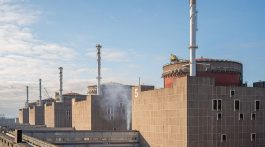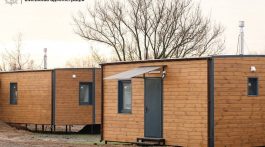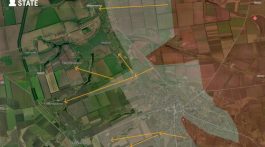No major damage has been reported in British Columbia after the province’s coastline was walloped with a 7.7-magnitude earthquake, one of the strongest tremors to hit the area in decades.
The quake prompted a number of tsunami warnings along the province’s coast, but all were called off early Sunday morning.
The U.S. Geological Survey said the magnitude 7.7. earthquake struck B.C. just after 8 p.m. PT Saturday, at a depth of 17 kilometres centred 139 km south of Masset in the Haida Gwaii region.
Rumbling was felt as far inland as the Metro Vancouver area.
The quake was followed by several aftershocks, the largest of which had a magnitude of 5.8.
Tsunami warnings were issued for a large stretch of the North and Central coast, as well as the Haida Gwaii region. Some residents, fearing a possible tsunami, fled their homes for higher ground.
All of the warnings affecting British Columbia’s coastline were called off at about 3:22 a.m. Sunday in a bulletin from the U.S. National Weather Service’s West Coast/Alaska Tsunami Warning Center.
Though the threat of a damaging tsunami has passed, strong waves off the coast of B.C. still pose a risk to boaters and swimmers, oceanographer Tad Murty told CTV News Channel Sunday.
“Even if the tsunami amplitude is small, the currents could be very strong,” he said.
One wave that lashed against Langara Island, in the Haida Gwaii area, measured 69 centimetres.
The earthquake produced strong waves that travelled north to the Alaska panhandle and south towards California and the Hawaiian islands, CTV Meteorologist Michael Kuss reported Sunday.
Environment Canada had urged residents in low-lying areas of coastal B.C. to seek higher ground as tall waves lashed the province’s shoreline. CTV British Columbia’s Penny Daflos reported that at least three communities — Sandspit, Bella Bella and Prince Rupert — were evacuated as a precaution.
Power outages were reported at some B.C. homes, while others said the tremor rattled their nerves and caused objects to fly off shelves.
Carsten Ginsburg, who lives in the small community of Bella Coola southeast of Prince Rupert, said the quake lasted for about 40 seconds.
“It shook everything. The electricity went out, the power lines were swinging all over the place and stuff was falling off the shelves,” she told The Canadian Press on Sunday.
In a conference call recorded late Saturday night, B.C. Justice Minister Shirley Bond told reporters the province was “certainly grateful at this point” that there appeared to be little damage.
Tsunami advisories were also cancelled in Oregon and Alaska on Sunday, while others remain in effect in northern California. Under an advisory, strong waves and significant sea level fluctuations are expected but evacuations aren’t necessary.
Saturday’s earthquake was the strongest to hit Canada since 1958, when a 7.9-magnitude quake struck near the British Columbia-Alaska border, according to Natural Resources Canada.
Just nine years before then, an 8.1-magnitude quake hit west of the Queen Charlotte Islands, in the same area that the most recent quake took place.
Earlier this month, more than 590,000 people participated in an earthquake preparation drill called The Great British Columbia ShakeOut. Participants were taught to “drop, cover and hold on” in case of a tremor.
In January 1700, a 9.0-magnitude earthquake struck offshore of Vancouver Island.
Read more: http://www.ctvnews.ca/canada/startling-7-7-magnitude-quake-rattles-b-c-coast-triggers-tsunami-fears-1.1013869#ixzz2AdNpxWKr
Correspondent of newspaper “Zaporozka Sich” in Canada Dmitry Ivanov



